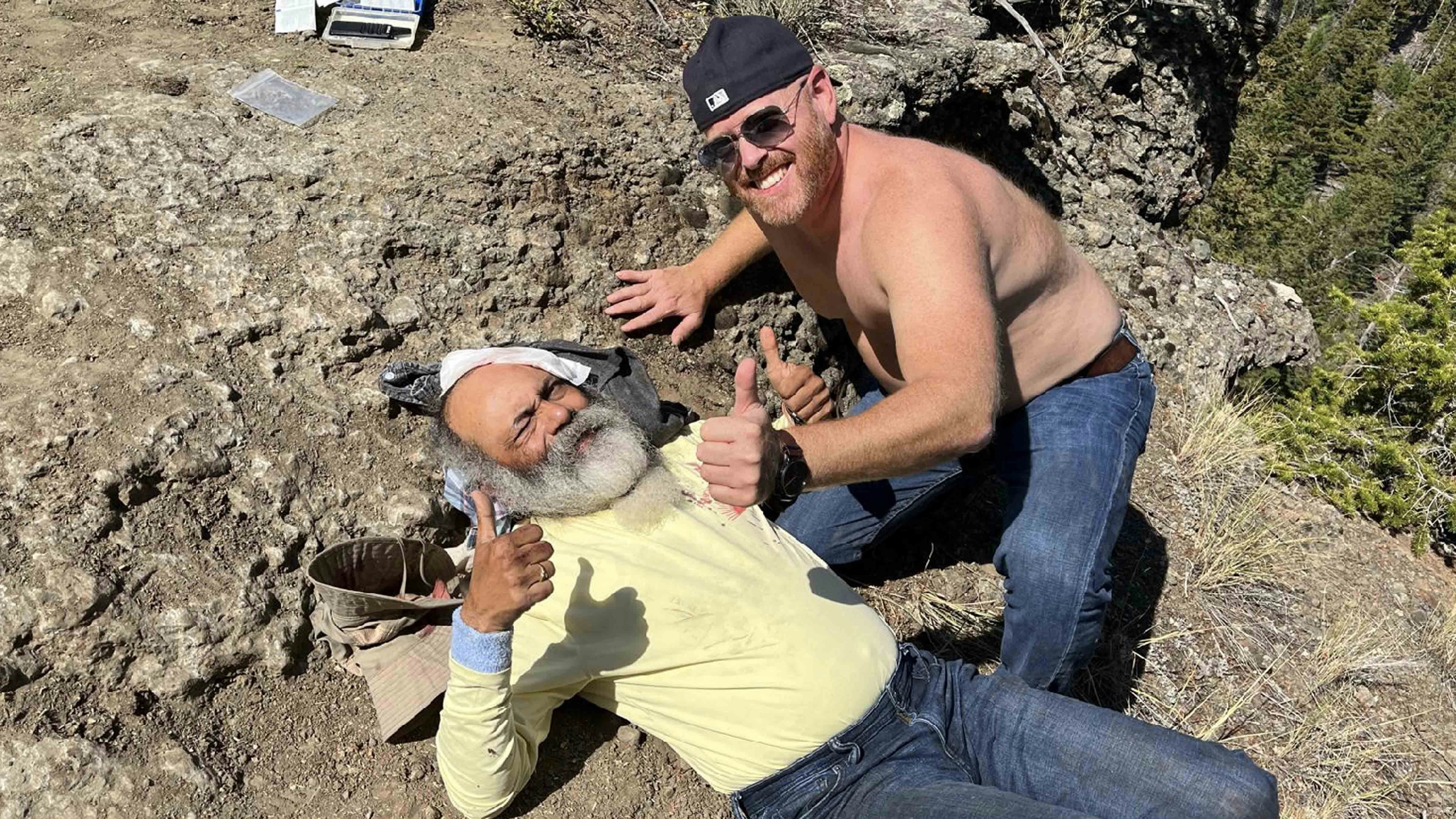The troubled story of Colorado’s Copper Creek wolf pack took another bad turn over Memorial Day weekend as members of the pack are being blamed for attacking cattle in broad daylight.
The Colorado Cattlemen’s Association is calling for the pack to be killed.
That could be premature, said Colorado resident Alli Henderson and regional director for the Center for Biological Diversity.
She told Cowboy State Daily that the attacks are still being investigated by Colorado Parks and Wildlife (CPW), so it’s still too early to make any such decisions.
A request for comment to CPW from Cowboy State Daily wasn’t answered.
Calving Ground Attacks
The Copper Creek pack was trapped and placed in captivity last August after a series of livestock killings in Colorado’s Middle Park area.
The Copper Creek wolves were released again earlier this year and are being blamed for attacks on cattle in Pitkin County, Colorado, south of Middle Park.
One attack took place on a ranch’s calving grounds, leaving two calves dead and others injured, according to a statement from the Colorado Cattlemen’s Association.
“A broad daylight attack at the Lost Marbles Ranch, carried out by three wolves from the notorious Copper Creek pack, took place in the heart of the calving grounds, a large meadow where ranchers actively monitor mothers and newborns during the critical calving season,” according to the statement.
In a “separate but related incident” May 22, a calf was killed and another injured on the Crystal River Ranch west of Highway 133, according to the cattlemen’s association.
The Copper Creek pack’s behavior meets CPW’s definition of “chronic depredation” of livestock, said Erin Spaur, executive vice president of the Colorado Cattlemen’s Association.
According to Colorado’s wolf reintroduction plan, killing wolves involved in chronic livestock depredation is an option.
That means the pack should be out of chances after having already been trapped for last year’s attacks on livestock in Middle Park, Spaur said.
“Surprise, surprise, they have the same behavior. They have a taste for cattle,” she said. “The ultimate goal, and what we’re asking for, is lethal control of the problem, because it’s not going away.”
Has Faith In ‘Non-Lethal’ Methods
Henderson that any decision about the Cooper Creek pack’s fate should wait until the full results of CPW’s investigation of the attacks are available.
One important question is whether ranchers in Pitkin County had tried using non-lethal methods to deter wolves prior to the attacks, she said.
“Were non-lethal measures being actively deployed?” she asked. “We know that the No. 1 way to avoid conflicts, keeping cows alive, keeping wolves alive is proactive deployment of non-lethal measures.”
Non-lethal deterrents include such things as flashing lights and brightly colored flags tied to fences. It’s even been suggested that wolves could be spooked away from livestock by dive-bombing them with drones.
Henderson said that over the long run, she’s optimistic that Colorado’s wolf reintroduction program will succeed, and non-lethal methods will be one of the keys to its success.
“This requires change, and change is scary. Change is hard,” she said.
CPW and the Colorado Department of Agriculture have plans in place to support ranchers, including help with non-lethal deterrents, she said.
Ranchers Say They’re Fed Up
Many Colorado ranchers think that the state isn’t holding up its end of the bargain in mitigating wolf-livestock conflicts, according to the cattlemen’s statement.
“CPW dispatched a range rider to the area but failed to provide essential information, including my contact information, specifics about the property or even a map of the terrain,” Tom Harrington, Crystal River ranch manager and cattlemen’s association president, said in the statement.
“I learned about the wolf activity and the range rider’s presence through our local brand inspector a day before I ever heard from wildlife officials,” he added. “We were promised partnership.”
That’s not happening, Harrington said.
“But it seems that the relationship has gone to the wayside,” he stated. “We’re left trying to figure this out on our own, rancher to rancher, neighbor to neighbor. The governor (Colorado Gov. Jared Polis) wants celebratory headlines about his successes, but he couldn’t care less about the actual impacts.
“He’s made his disfavorable opinion about those of us who choose a rural lifestyle loud and clear.”
First Pack Of Reintroduced Wolves
There were wolves in Colorado before that state’s reintroduction program began.
The North Park pack was formed by wolves that migrated into Colorado from Wyoming in 2019-2020. That pack later dissipated. It’s thought that some of its members wandered back across the state line into Wyoming and were legally shot by hunters.
Two survivors from that pack, both males, are thought to still be in Colorado.
CPW began reintroducing wolves in late 2023, releasing 10 wolves brought in from Oregon. Another batch of 15 wolves from British Columbia, Canada, was released in Colorado in January.
The Copper Creek pack was formed by wolves from the Oregon batch. They were the first reintroduced wolves confirmed to have pups.
Colorado’s wolf population could soon grow significantly. CPW recently reported that there could be as many as four pairs of wolves denning and possibly having pups in Colorado.
Mark Heinz can be reached at mark@cowboystatedaily.com.





